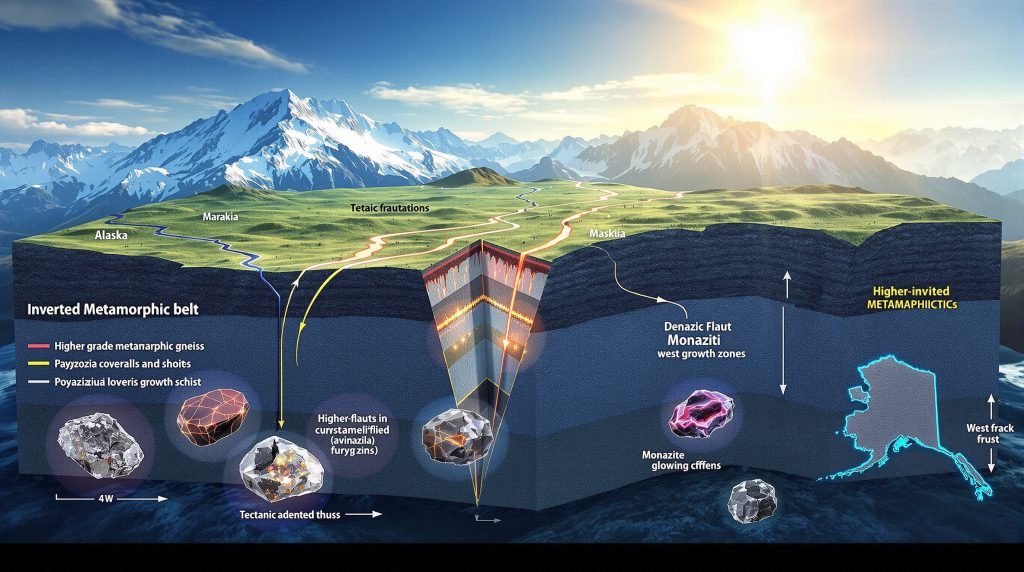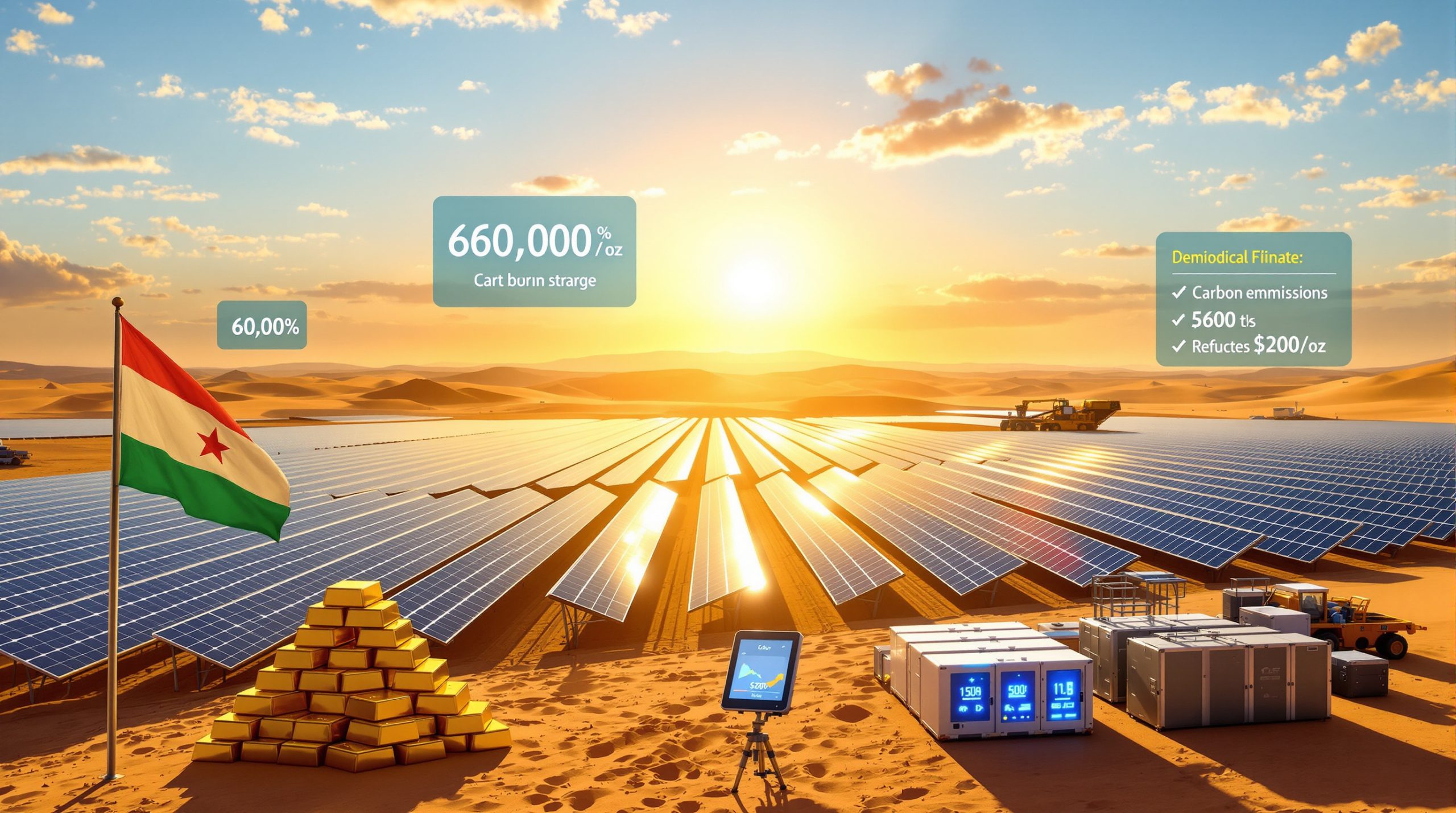How Do Inverted Metamorphic Belts Form?
Inverted metamorphic belts represent one of geology's most fascinating paradoxes. In typical geological settings, metamorphic grade increases with depth as both pressure and temperature rise deeper within Earth's crust. However, in inverted metamorphic belts, this pattern is reversed—higher-grade metamorphic rocks (formed under greater temperature and pressure conditions) structurally overlie lower-grade rocks.
This counterintuitive arrangement typically forms during intense contractional deformation, where deeper crustal rocks are thrust over shallower ones. As these deep-seated rocks move upward along thrust faults, they preserve evidence of the high-pressure, high-temperature conditions they experienced at depth, creating a sequence where metamorphic grade increases upward.
The formation process involves complex tectonic mechanisms where crustal shortening forces deeper, hotter rocks to move up and over cooler, shallower rocks. This thrusting creates a distinctive structural signature, with consistent directional indicators showing the movement direction of these large-scale rock masses.
In Alaska, these belts consistently show top-to-the-west movement patterns, indicating easterly rocks were thrust westward during contractional events. This directional consistency provides crucial evidence of ancient collisional processes and helps geologists reconstruct the complex tectonic history of the North American Cordillera.
Where Are Alaska's Major Inverted Metamorphic Belts Located?
Alaska hosts several significant inverted metamorphic belts that form a discontinuous pattern along major fault systems. While once connected, subsequent tectonic events have separated these belts into distinct regions across the state.
The Western Alaska Range (Valdez Creek Region)
Located north of the Denali fault in the central Alaska Range, this belt shows a clear progression from lower-grade schists at the structural bottom to higher-grade gneisses at the top. The metamorphic rocks here belong primarily to the McLaren Glacier metamorphic belt and Clearwater metasedimentary rocks, representing components of the northern and southern Kahiltna assemblage respectively.
Detailed provenance studies by researchers at Purdue University have revealed important source differences between these units. The McLaren Glacier metamorphic belt contains material derived partly from North America and partly from the Insular superterrane, while the Clearwater metasedimentary rocks originate entirely from the Insular superterrane.
The Valdez Creek area also features important igneous markers, including a 70-million-year-old tonalite sill marking the upper portion of the inverted metamorphic sequence, and economically significant 88-million-year-old plutonic stocks that host gold prices analysis.
The Kluane Lake Region (Alaska-Yukon Border)
Straddling the international border between Alaska and Yukon Territory, this belt preserves similar inverted metamorphic patterns and shares tectonic history with the Western Alaska Range belt. Recent studies by McKenzie and colleagues have documented comparable monazite geochronology patterns in this region, suggesting a unified metamorphic history with the other Alaskan belts.
The continuity of features between the Kluane Lake and Valdez Creek regions provides important evidence for the formerly connected nature of these now-separated metamorphic belts, offering insights into their pre-Denali fault configuration.
The Juneau Area (Southeast Alaska)
In Southeast Alaska near Juneau, another prominent inverted metamorphic belt displays increasing metamorphic grade upward through the section. What makes this belt particularly distinctive is its structural architecture—the entire stratigraphic sequence appears flipped upside down.
The Juneau belt begins with Gravina overlap assemblage rocks at its base, followed upward by rocks of the Taku terrane (Permian volcanic and sedimentary rocks), which are in turn overlain by the Devonian-Mississippian Yukon-Tanana terrane. This inverted stratigraphy contrasts sharply with the normal sequence seen in mainland Alaska, where Yukon-Tanana terrane rocks underlie the younger Permian volcanic sequences.
Like the Valdez Creek region, the Juneau area's inverted metamorphic belt is capped by a distinctive 70-million-year-old tonalite intrusion known as the Great Tonalite Sill, providing an important temporal marker for correlating these widely separated belts.
Why Are These Belts Significant for Understanding Alaska's Geological History?
Evidence of Major Collision Events
Recent research has revealed that these seemingly disconnected belts were once part of a unified suture zone that marked the accretion of the Wrangellia composite terrane to the North American margin. The consistent structural patterns, metamorphic conditions, and timing constraints across all three belts provide compelling evidence that they formed during the same tectonic event.
The structural relationships preserved in these belts document the mechanics of this major collision, showing how deeper crustal levels were thrust westward over shallower rocks as the Wrangellia composite terrane collided with the ancient margin of North America. This accretionary event was a critical chapter in building the complex mosaic of terranes that now constitute Alaska.
Timing of Terrane Accretion
Precise dating of metamorphic minerals, particularly monazite, has shown that peak metamorphism in these belts occurred during the Late Cretaceous to early Paleogene (approximately 70-55 million years ago). This timing helps constrain when major terrane accretion occurred along the western margin of North America.
Interestingly, determining the exact timing of collision depends significantly on which geological record is examined. Sedimentary records provide maximum depositional ages, igneous relationships offer different timing constraints based on crosscutting relationships, and metamorphic/deformational histories may yield younger age estimates. Rather than contradicting each other, these different lines of evidence suggest that collision was not an instantaneous event but rather a prolonged process spanning millions of years.
This timing coincides with the cessation of eastward arc migration around 60 million years ago. Prior to this, the magmatic arc had been migrating eastward at approximately 2 kilometers per million years from 100 to 60-65 million years ago, based on research by Robinson Cissell and George Gehrels. The halt in arc migration aligns with the timing of peak metamorphism in these inverted belts, suggesting a causal relationship between terrane accretion and changes in subduction dynamics.
Relationship to the Denali Fault System
The current disconnected nature of these metamorphic belts is largely due to subsequent offset along the Denali fault system. By studying the characteristics and correlations between these now-separated belts, geologists have been able to determine that approximately 300 kilometers of right-lateral displacement has occurred along the eastern Denali fault since the Eocene, with decreasing amounts of offset toward the west.
This pattern of decreasing offset from east to west mirrors the modern slip rate distribution observed along the Denali fault, where rates decrease from about 13 mm/year near the Alaska-Yukon border to 4-5 mm/year west of the central Alaska Range. This correlation suggests that the curved geometry of the Denali fault and its variable slip rate distribution are long-term features of the fault system rather than recent developments.
How Do Geologists Study These Inverted Belts?
Monazite Geochronology
Monazite, a light rare earth element-bearing orthophosphate mineral, has proven invaluable for dating metamorphic events in Alaska's inverted belts. Because monazite can grow during different stages of metamorphism and preserve chemical zonation, it serves as a powerful recorder of a rock's pressure-temperature-time history.
Recent studies have identified consistent patterns in monazite from all three major Alaskan belts, with cores showing low yttrium content and rims showing high yttrium content. This compositional zonation directly records the metamorphic history of the rocks, as garnet (which strongly incorporates yttrium) competes with monazite for this element during mineral growth.
Low-yttrium cores in monazite indicate growth during garnet stability, which typically occurs at higher pressures and temperatures deeper in the crust. In contrast, high-yttrium rims suggest monazite growth during garnet breakdown, which happens during decompression as rocks move upward. This pattern suggests a common metamorphic history involving early deep burial followed by exhumation.
The consistent monazite compositional patterns across all three belts provide strong evidence that they experienced the same metamorphic processes, despite their current separation by hundreds of kilometers.
Structural Analysis
Kinematic indicators throughout these belts consistently show top-to-the-west movement during contractional deformation. These indicators include asymmetric mineral growth patterns, shear fabrics, and other small-scale structural features that record the direction of tectonic transport.
This uniform direction of tectonic transport supports the interpretation that these rocks were thrust westward during the final stages of terrane accretion. The consistency of these indicators across all three belts further strengthens the argument that they once formed part of a continuous structural zone.
Petrological Studies
Detailed examination of mineral assemblages and reactions has allowed geologists to reconstruct the pressure-temperature paths experienced by these rocks. In the Juneau area, for example, peak metamorphic temperatures increase upward from about 530°C to 705°C over approximately 8 kilometers of structural thickness, with pressures of 9-11 kilobars throughout the section.
These pressure-temperature estimates help constrain the depth and thermal conditions these rocks experienced during metamorphism, providing important insights into the crustal architecture during collision and subsequent exhumation processes.
What Makes Alaska's Inverted Metamorphic Belts Unique?
Exceptional Preservation
Alaska's inverted metamorphic belts in Alaska are remarkably well-preserved compared to similar features worldwide. This preservation allows geologists to study these structures in greater detail than is possible in many other orogenic belts.
The exceptional preservation likely results from a combination of factors, including the relatively recent timing of the collision event, limited post-collisional erosion in certain areas, and the absence of subsequent overprinting metamorphic events that might have obscured the original relationships.
Connection to Strike-Slip Faulting
The relationship between these belts and the Denali fault system provides a rare opportunity to study how major strike-slip faults can dismember earlier contractional structures. This has implications for understanding the evolution of other complex orogenic systems globally.
The offset of these once-continuous belts by the Denali fault system offers valuable piercing points for quantifying fault displacement. Research has demonstrated approximately 305 kilometers of offset on the eastern segment of the Denali fault and about 155 kilometers on its western segment, both accumulated over the past 35 million years. These offsets yield average slip rates of approximately 8.7 mm/year and 4.4 mm/year respectively, closely matching modern Quaternary slip rate patterns measured through geomorphological studies.
Record of Wrangellia Accretion
These belts provide some of the clearest evidence for the timing and mechanics of Wrangellia accretion, a major event in Cordilleran tectonics that has been challenging to constrain precisely due to later deformation and magmatism.
The inverted metamorphic belts preserve direct structural evidence of the collision process, recording how deeper crustal levels were thrust over shallower ones as the Wrangellia composite terrane was accreted to North America. The consistent timing of metamorphism across all three belts provides important constraints on when this collision reached its peak intensity.
How Do These Belts Compare to Similar Features Worldwide?
Inverted metamorphic belts are relatively rare globally but occur in several major collision zones, including:
-
The Himalayan Main Central Thrust Zone: Perhaps the most famous example, where Indian continental crust is being thrust beneath Asia, creating a well-documented inverted metamorphic sequence. The Main Central Thrust separates lower-grade rocks of the Lesser Himalayas from higher-grade rocks of the Greater Himalayas, with metamorphic grade increasing dramatically upward across this boundary.
-
The European Alps: Several inverted metamorphic zones mark sutures between different continental fragments during Alpine orogenesis. These zones preserve evidence of the complex collisional history between the European and African plates, with varying ages and structural styles depending on the specific segment of the orogen.
-
The Appalachians: Older examples of inverted metamorphism are preserved in parts of this ancient mountain belt, recording Paleozoic collisional events between Laurentia and various terranes during the assembly of Pangaea.
Alaska's examples are distinctive because they formed during oblique convergence and terrane accretion rather than continent-continent collision, and they have been subsequently modified by major strike-slip faulting. This makes them particularly valuable for understanding the complex interplay between different tectonic processes.
Unlike many older orogenic belts where the original relationships have been obscured by subsequent deformation, erosion, or overprinting metamorphism, Alaska's inverted metamorphic belts remain relatively well-preserved. This preservation allows for more detailed reconstruction of the tectonic processes involved in their formation.
The presence of consistent timing markers across all three belts, particularly the 70-million-year-old tonalite intrusions, provides unusually strong temporal constraints compared to many other inverted metamorphic belts worldwide.
What Do These Belts Tell Us About Alaska's Tectonic Evolution?
A Prolonged Accretionary History
The metamorphic and structural data from these belts suggest that the accretion of terranes to North America was not an instantaneous event but rather a prolonged process spanning millions of years. Different lines of evidence—sedimentary, igneous, and metamorphic—may yield slightly different timing constraints, reflecting different stages of this complex process.
This prolonged history is consistent with observations from other major collisional orogens worldwide, where the transition from initial contact to final suturing typically occurs over tens of millions of years. The evidence from Alaska's inverted metamorphic belts suggests that peak collision occurred in the Late Cretaceous to early Paleogene (approximately 70-55 million years ago), though earlier stages of the process likely began in the mid-Cretaceous.
Changing Plate Motions
The transition from predominantly contractional deformation during formation of these inverted belts to strike-slip motion along the Denali fault system reflects a fundamental change in plate motions along the North American margin during the Eocene. This shift may relate to broader reorganizations of Pacific plate motion around 55-50 million years ago.
The timing of this transition aligns with significant changes in plate motion vectors documented elsewhere along the Pacific-North American plate boundary, suggesting a large-scale reorganization of tectonic forces rather than a localized phenomenon. This transition marks a fundamental shift in how strain was accommodated along the margin, from primarily contractional to primarily strike-slip.
Arc Migration Patterns
The cessation of eastward migration of magmatic arcs in Alaska around 60 million years ago coincides with the timing of peak metamorphism in these inverted belts, suggesting a causal relationship between terrane accretion and changes in subduction dynamics.
Prior to this time, the arc had been migrating eastward at approximately 2 kilometers per million years from 100 million years ago, based on extensive geochronological studies. The halt in arc migration likely reflects changes in the geometry of the subduction zone following final accretion of the Wrangellia composite terrane.
How Have Recent Research Methods Advanced Our Understanding?
Modern analytical techniques have revolutionized the study of Alaska's inverted metamorphic belts:
-
In-situ Electron Microprobe Dating: Allows precise dating of monazite growth zones while preserving their textural context, enabling correlation between metamorphic reactions and ages. This technique has been crucial for establishing the timing relationships between different metamorphic events and linking them to specific deformational processes.
-
Trace Element Geochemistry: Helps fingerprint different plutonic bodies and determine whether they were once connected before being offset by faults. For example, distinctive hafnium isotope signatures have been used to test correlations between plutons across the Denali fault, revealing that some previously proposed correlations were incorrect while identifying new matches that yield more realistic displacement estimates.
-
Detrital Zircon Geochronology: Provides constraints on the provenance of metasedimentary rocks involved in these belts, helping distinguish between North American and exotic terrane components. This technique has been particularly important for differentiating between the McLaren Glacier metamorphic belt (derived partly from North America) and Clearwater metasedimentary rocks (derived entirely from the Insular superterrane).
-
3D geological modelling: Techniques such as 40Ar/39Ar dating and fission track analysis help constrain the cooling and exhumation history of these metamorphic belts. These methods track the movement of rocks through different temperature thresholds during uplift, providing a more complete picture of their post-metamorphic evolution.
These advanced analytical methods have allowed researchers to extract more detailed information from the rocks than was previously possible, leading to more nuanced and comprehensive interpretations of Alaska's tectonic history.
Collaborative research networks involving scientists from multiple institutions have been crucial for integrating different analytical approaches and regional expertise. Research teams from the University of Alaska Fairbanks, the Alaska Division of Geological & Geophysical Surveys, the U.S. Geological Survey, South Dakota School of Mines and Technology, Boise State University, Purdue University, and other institutions have contributed complementary expertise to this ongoing work.
What Implications Do These Belts Have for Resource Exploration?
Understanding the distribution and characteristics of Alaska's inverted metamorphic belts has practical applications for mineral exploration:
-
Gold Mineralization: Several significant gold deposits in Alaska, including those in the Valdez Creek district, are spatially associated with these metamorphic belts and the plutons that intrude them. The 88-million-year-old plutonic stocks in the Valdez Creek area host economically important gold deposits, highlighting the relationship between magmatism, metamorphism, and mineralization.
-
Critical minerals energy security: The metamorphic and igneous processes that formed these belts concentrated various critical minerals, making them potential exploration targets. The unique pressure-temperature conditions experienced during inverted metamorphism can create favorable environments for the concentration of rare earth elements, strategic metals, and other economically important commodities.
-
Predictive Models: Recognizing the original continuity of these now-offset belts helps develop more accurate predictive models for where similar mineralization might occur elsewhere along the belt. By reconstructing the pre-Denali fault configuration of these belts, geologists can identify potential exploration targets that may have been displaced from known mineralized zones.
The relationship between specific metamorphic conditions and mineral deposit types provides important exploration criteria that can be applied throughout the region. Understanding the timing and nature of fluid flow during metamorphism and subsequent cooling helps constrain when and where economically important mineralization may have occurred.
Conclusion: Why Alaska's Inverted Metamorphic Belts Matter
Alaska's inverted metamorphic belts represent more than just geological curiosities—they are fundamental keys to unlocking the complex tectonic history of western North America. By preserving evidence of major terrane accretion events and subsequent strike-slip faulting, these belts allow geologists to reconstruct the assembly of Alaska's geological puzzle.
The integration of modern analytical techniques with careful field observations has revealed that these seemingly disconnected belts were once part of a continuous suture zone marking the final stages of Wrangellia accretion. Their subsequent dismemberment by the Denali fault system provides crucial constraints on the timing and magnitude of strike-slip motion along this important structure.
The consistent patterns observed across all three major belts—including similar structural styles, metamorphic conditions, monazite compositional zonation, and timing constraints—provide compelling evidence for their original continuity and shared tectonic history. This evidence supports a model where the Wrangellia composite terrane was accreted to North America during a prolonged collision spanning the Late Cretaceous to early Paleogene, followed by significant strike-slip displacement since the Eocene.
As research continues, these exceptional geological features will undoubtedly yield further insights into the processes that shaped Alaska and the broader North American Cordillera. Their study has implications not only for understanding regional tectonic history but also for resource exploration, seismic hazard assessment, and the fundamental mechanics of orogenic processes.
Further Exploration:
For readers interested in deepening their understanding of Alaska's complex geology, numerous resources are available. University courses, field trips organized by professional geological societies, and online educational content provide opportunities to explore these fascinating geological features firsthand or virtually.
Regional geological surveys, including the Alaska Division of Geological & Geophysical Surveys, publish detailed maps, reports, and digital resources documenting Alaska's geology. Academic journals such as Tectonics, Journal of Structural Geology, and Geological Society of America Bulletin regularly publish new research on the region's tectonic evolution.
The ongoing work of research teams at the University of Alaska Fairbanks, South Dakota School of Mines and Technology, Purdue University, and other institutions continues to refine our understanding of these important geological structures and their significance for reconstructing North America's complex tectonic history. Furthermore, understanding the mineral exploration importance in these regions can provide valuable insights for junior mining exploration companies looking to develop new resources in Alaska.
Ready to Capitalise on the Next Major Mineral Discovery?
Stay ahead of the market with Discovery Alert's proprietary Discovery IQ model that instantly notifies investors of significant ASX mineral discoveries, transforming complex geological data into actionable investment insights. Explore historic discovery returns and begin your 30-day free trial today at https://discoveryalert.com.au/discoveries/.




